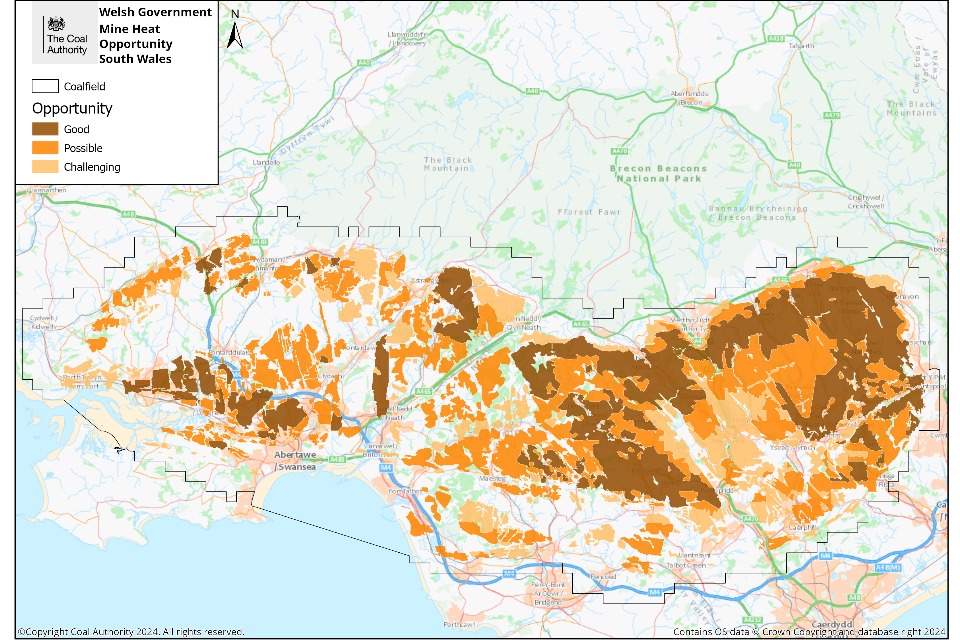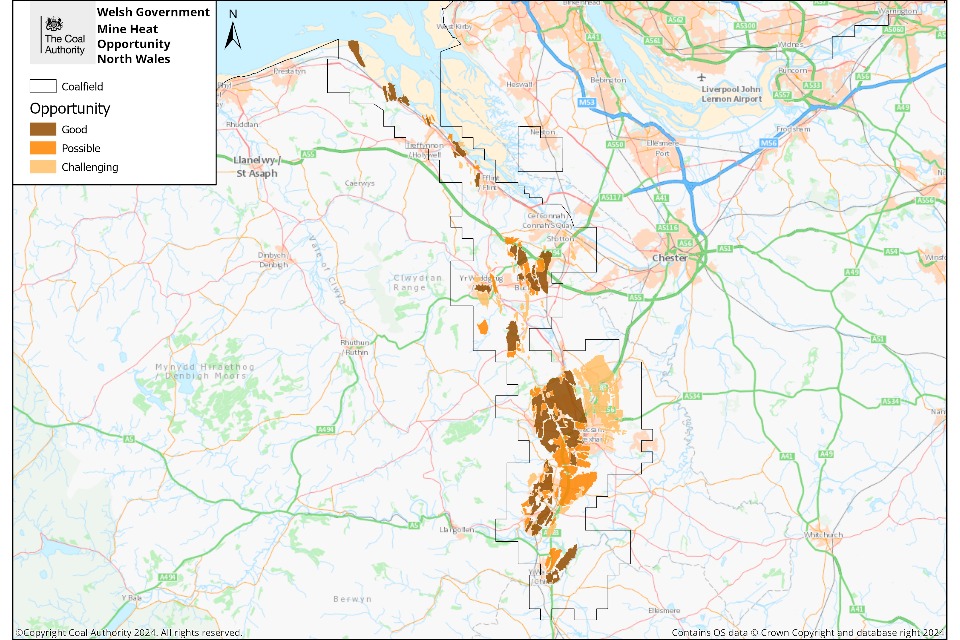The areas of Wales best equipped to benefit from innovative mine water heat schemes have been revealed by the Coal Authority in a new open access map, available on the 'DataMapWales' website.
Wales' long history of coal mining has left behind a network of underground workings, most of which are now closed and full of water. We can use this water to recover heat, providing space heating to buildings and heat networks.

Mine heat opportunity in South Wales
To better understand where this technology can be considered, the new map, which outlines opportunities for low carbon mine water heat schemes, has been commissioned by the Welsh Government to support its recently released 'Heat Strategy for Wales'.
The map is supported by a series of open-access reports describing the best opportunities in each local authority area.
The findings should enable both the public and private sectors to consider whether mine water could be a viable space heating or cooling solution for existing or planned homes, businesses or industries in Wales.
The work involved assessing all known coal mine workings in Wales and took more than a year to complete.
It ranks areas for possible mine water heat schemes, which could then be investigated either using purpose-drilled boreholes to access the workings or by connecting to existing mine water treatment schemes.
The results show that nearly 20% of Welsh homes lie within one of the three highest opportunity category areas for mine water heat.
Gareth Farr, head of the mine water heat team at the Coal Authority, said:
We're really excited that the open access map will be able to support organisations who want to consider using mine water to support secure low carbon heating solutions in Wales.
We're delighted to have worked with Welsh Government on this project and it is a brilliant way to repurpose our industrial coal mining heritage to create a greener more equitable future.
Ken Skates, Welsh Government Cabinet Secretary with responsibility for the economy and energy said:
We know that we are going to need a huge amount more renewable energy to power the Wales of tomorrow. Our recently published Heat strategy for Wales identified mine water as a low carbon heat source for heat networks. These maps, used in conjunction with Local Area Energy Plans, will help Wales and the Welsh Government maximises the opportunities presented by our geography, our industrial past and the decarbonisation agenda.
By looking at projects such as mine water heating, as well continuing to make strides in the delivery of a swathe of other renewable energy schemes, there is every reason to be optimistic about our future as global leaders both in the adoption and creation of cleaner energy and the technology that facilitates it.
Technical experts considered many different factors to create the opportunity maps, including underground working depths, mine water levels, and evidence of opencast mine workings.
The levels of opportunities are illustrated by three categories: good, possible, and challenging.
It also includes information on Coal Authority mine water treatment sites, where water is already being brought up to the surface, and could be used to support low carbon heating schemes.

Mine heat opportunity in North Wales
Mine Water Heat: a proven concept
Recovering heat from mine water is a proven technology that is used elsewhere in Great Britain. One of the biggest mine water heat networks in Europe, can be found in Gateshead in the North East of England.
Operating successfully since March 2023, the Gateshead mine water heat network provides secure, low carbon heating to 350 homes, a college, a music venue, an arts centre, several office buildings and a large manufacturing site.
In addition to providing a solution to the climate change crisis by utilising the historical mine workings that lie beneath our feet users have also reported large savings on their monthly energy bills.
Moreover, the networks can continue to grow as opportunities arise, and in Gateshead, there are plans in place for future additions to include 270 private homes, a new conference centre and a hotel development.






